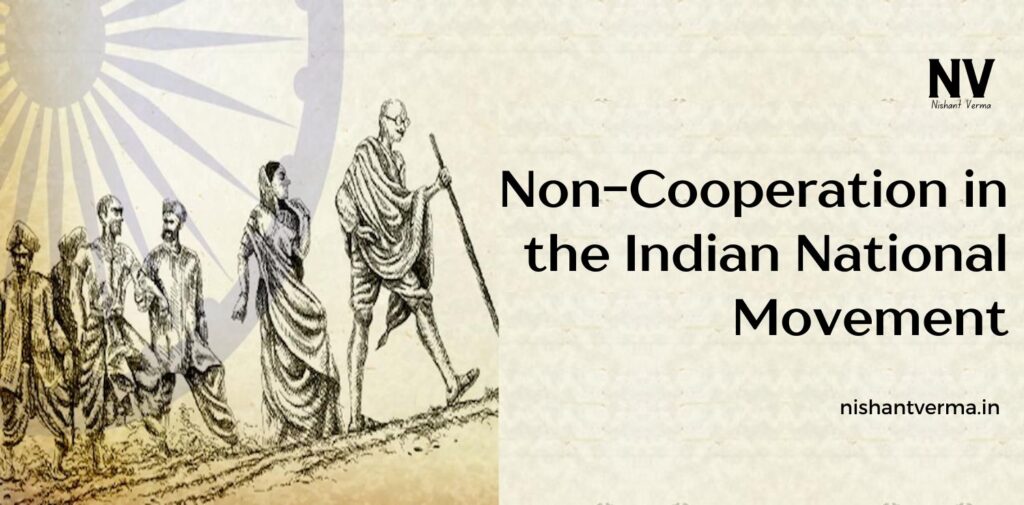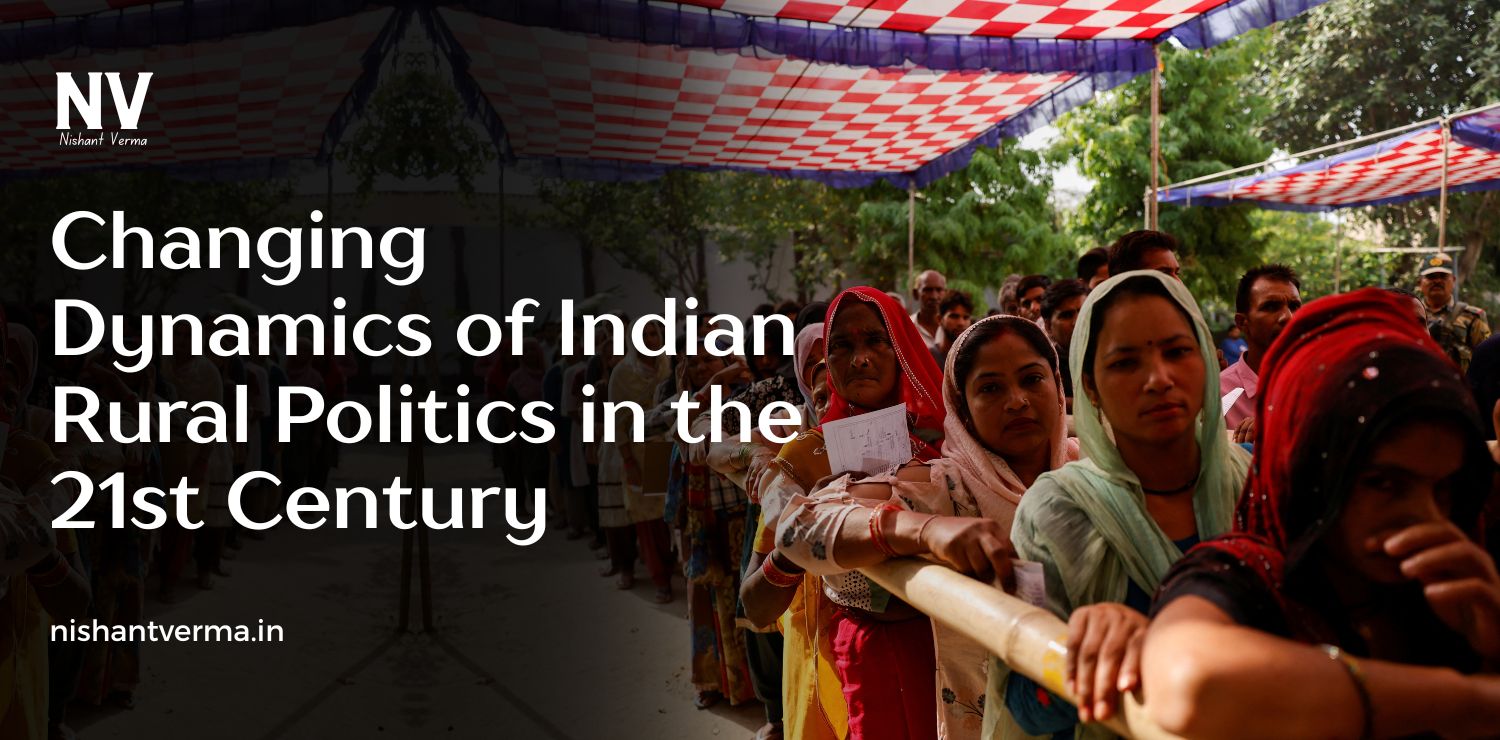The Indian National Movement, which aimed for India’s independence from British colonial rule, was marked by numerous strategies and movements. One of the most significant and transformative strategies was the Non-Cooperation Movement. Launched by Mahatma Gandhi in 1920, it played a crucial role in rallying Indians from different walks of life to unite against British rule. The movement, which emphasized non-violent resistance and the refusal to cooperate with the British government, brought a new dimension to India’s fight for freedom.
In this article, we will explore the the Non-Cooperation Movement in the Indian National Movement, its objectives, and how it helped shape the path to India’s independence.
What Was the Non-Cooperation Movement?
The Non-Cooperation Movement was a political campaign launched by Mahatma Gandhi in response to the oppressive actions of the British government, particularly after the Jallianwala Bagh massacre in 1919. Gandhi’s philosophy of ahimsa (non-violence) and satyagraha (truth force) formed the foundation of this movement. The idea behind the Non-Cooperation Movement was simple yet powerful: Indians should refuse to cooperate with the British authorities in every possible way—politically, socially, and economically.
The key principles of the movement included:
- Boycotting British goods: Indians were encouraged to boycott British products, especially foreign clothes, and promote the use of Indian-made goods.
- Refusal to pay taxes: The movement called for non-payment of taxes to the British government.
- Resignation from government jobs: Indians were urged to leave government jobs and positions that helped the British colonial structure.
- Boycotting British schools and courts: Education systems and courts that were under British control were to be boycotted by Indians.
- Non-violent protests and demonstrations: Public demonstrations, meetings, and peaceful protests were to be organized to oppose British rule.
The Non-Cooperation Movement was a turning point in the Indian struggle for independence. It marked a shift from the previous moderate strategies to a more assertive and mass-based movement.
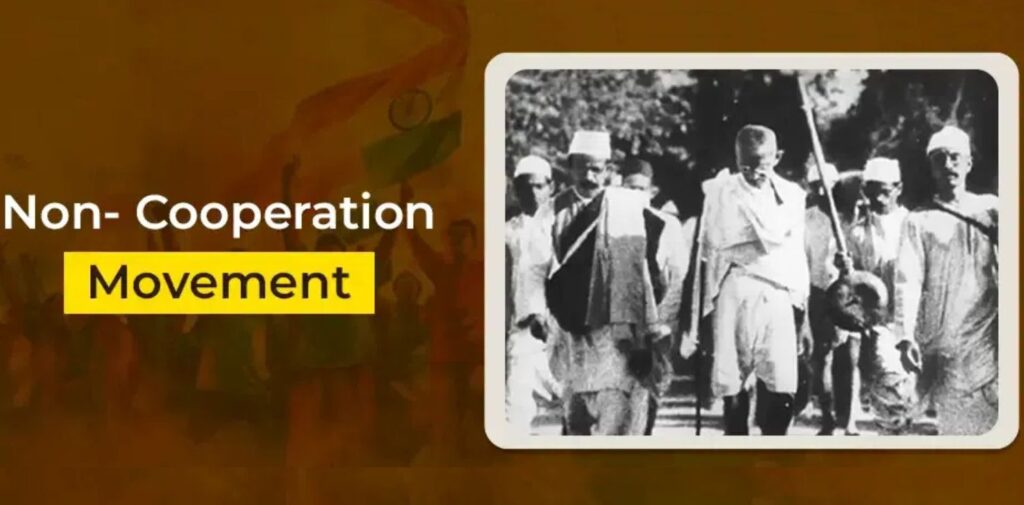
Key Objectives of the Non-Cooperation Movement
The Non-Cooperation Movement was not just about protesting against British rule; it had specific objectives aimed at strengthening Indian unity and self-reliance.
1. Promoting Swadeshi (Self-reliance):
The idea of Swadeshi (use of indigenous goods) was central to the movement. Gandhi encouraged Indians to reject foreign goods, particularly British-made textiles, and instead promote local industries. Spinning khadi (hand-spun cloth) became a symbol of this movement, with Gandhi himself often seen wearing simple homespun clothes. This was not just an economic boycott but also a symbolic act of self-reliance and national pride. By focusing on indigenous production, the movement sought to weaken the British economic grip over India.
2. Achieving Political Independence:
The Non-Cooperation Movement sought to pressurize the British government to grant India political freedom. By encouraging Indians to withdraw from participating in the colonial administrative system, the movement aimed to weaken British control and showcase the power of Indian unity. The boycott of British-run institutions and the demand for a greater share in governance became central to the movement’s political goal of achieving self-rule.
3. Unity among Different Sections of Society:
One of the key achievements of the Non-Cooperation Movement was its ability to unite people from all sections of Indian society. The movement brought together peasants, workers, students, women, and the elite in a common cause. Gandhi’s call for mass participation, irrespective of caste, religion, or region, helped break down social barriers and promoted a sense of national unity. The inclusion of marginalized groups, such as the untouchables (whom Gandhi referred to as Harijans or “children of God”), also made the movement more inclusive and widespread.
4. Protest Against British Oppression:
The movement was a direct response to the oppressive nature of British colonial rule. One of the most powerful motivations for the movement was the aftermath of the Jallianwala Bagh massacre in 1919, where British troops killed hundreds of unarmed Indian civilians. The brutality of this incident fueled the national outrage and prompted Gandhi to launch the Non-Cooperation Movement. It was seen as a way for Indians to express their anger and frustration against the British exploitation of India.
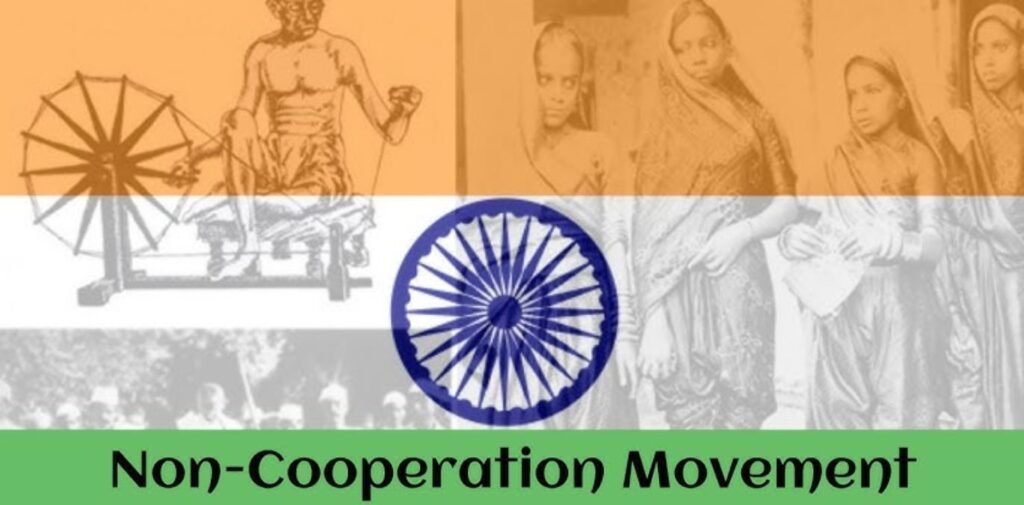
The Impact of the Non-Cooperation Movement
1. Mass Participation and Mobilization:
The Non-Cooperation Movement was the first national movement in which people from all regions, classes, and communities actively participated. Gandhi’s emphasis on non-violence and peaceful methods made it possible for women, students, and peasants to join the struggle. The widespread participation demonstrated the strength of the Indian population’s resolve for independence.
The movement also reached into rural areas, where the peasant population had suffered under British rule. Gandhi’s call for non-cooperation resonated with them, especially in the form of the boycott of British goods and the non-payment of taxes. It was the first time that large segments of the rural population actively participated in the political struggle.
2. Economic Impact:
The economic boycott, especially the rejection of foreign goods, had a direct impact on the British economy. The boycott of British textiles, which was one of the most important industries for Britain, hurt the sales of British-made fabrics in India. This showed the British that the economic ties they had with India were crucial, and if these were severed, it would have a significant effect on the British economy.
Furthermore, the promotion of Swadeshi led to the growth of local industries. The production of khadi (homespun cloth) was seen as a symbol of self-reliance and self-respect. Gandhi’s efforts to revive rural industries and local craftsmanship helped bring attention to India’s need for economic independence.
3. Political Consequences:
Politically, the Non-Cooperation Movement created a major challenge for the British government. The movement united Indians from all walks of life, making it difficult for the British to suppress it. The British government responded with repressive measures, including arrests and violence, but these only increased the resentment against colonial rule.
The movement also led to the rise of new political leaders and strengthened the Indian National Congress. The mass involvement in the movement helped the Congress to become the main representative of the Indian population. While the movement did not immediately lead to independence, it was an important step in gaining international attention and making the British aware of India’s growing demands for self-rule.
4. The Chauri Chaura Incident:
In 1922, the Non-Cooperation Movement was called off by Gandhi due to the violence that erupted at the Chauri Chaura incident in Uttar Pradesh, where a group of protesters clashed with the police, resulting in the deaths of several police officers. Gandhi, who had always advocated non-violence, decided to suspend the movement to prevent further violence. Though the movement was called off prematurely, the Chauri Chaura incident showed the emotional intensity and frustration that people felt under British rule, leading to a more mature and strategic approach to future movements.
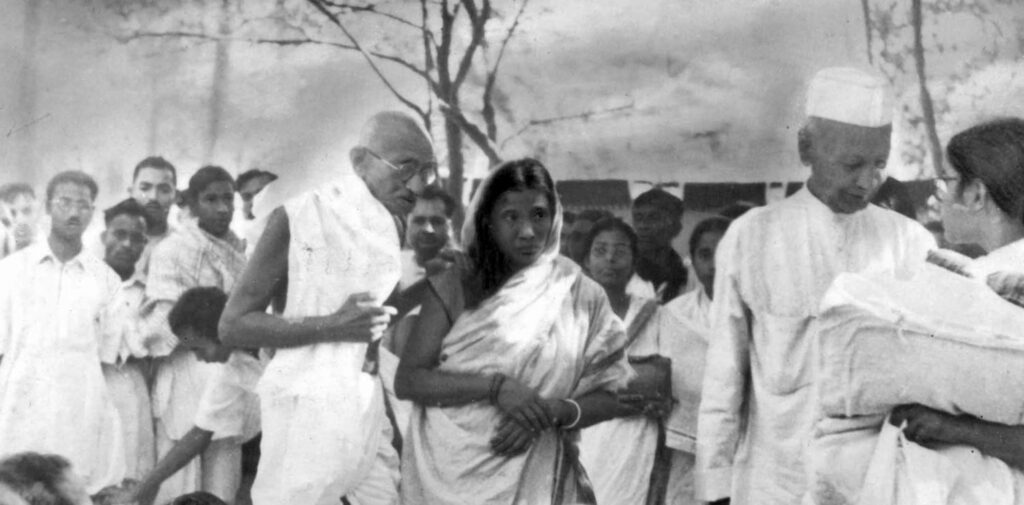
Conclusion: Indian National Movement
The Non-Cooperation Movement was a landmark event in the Indian National Movement. It marked the beginning of a mass-based struggle against British colonial rule and demonstrated the power of non-violent resistance. Though it did not immediately achieve the goal of political independence, it had a lasting impact on Indian society and the freedom struggle.
The movement united the Indian masses, brought attention to the harsh realities of British rule, and showcased the strength of non-violent resistance. It also set the stage for future movements like the Civil Disobedience Movement and the Quit India Movement, which eventually led to India’s independence in 1947.
Gandhi’s leadership and the widespread support for the Non-Cooperation Movement helped to awaken a sense of national identity among Indians. It made clear that independence could only be achieved through unity, self-reliance, and the refusal to cooperate with an unjust system. Today, the Non-Cooperation Movement stands as a testament to the power of peaceful resistance in the face of oppression.

